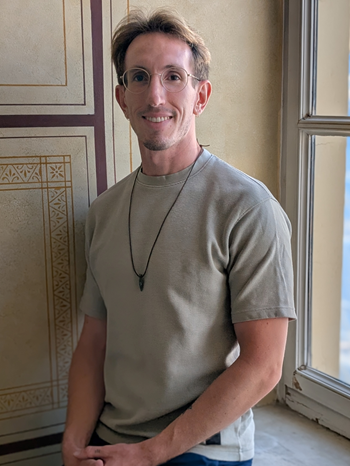Hakon Rückemann M.A. M.A.

Landscape Archaeology and Architecture (LAA)
Klassische Archäologie
Institut für Klassische Archäologie
Fabeckstraße 23-25
14195 Berlin
02/2021 – Present
Research Assistant for the Olympia excavation at the German Archaeological Institute Athens
11/2020 – 01/2021
Research Assistant in the photothek at the German Archaeological Institute Damascus
09/2020 – 10/2022
Part of the Kephissos Valley Project of the German Archaeological Institute Athens
Architectural Survey in 2020 and 2021
Excavations in 2022
08/2019 – 10/2019
Excavation of a house in Babunje/Apollonia, Albania (Humboldt University)
02/2019 – 03/2019
Excavation of a Gallo-Roman temple in Xanten, Germany
08/2016 – 09/2016
Excavation of a pottery workshop in Selinunt, Italy (University of Bonn)
04/2019 – 06/2024
Humboldt-Universität Berlin
Master of Arts in Classical Archaeology
09/2017 – 07/2019
University of Kent & Athens University of Ecnomics and Business
Master of Arts in Heritage Management
10/2015 – 07/2017
Rheinische Friedrich-Wilhelms Universität Bonn
Bachelor of Arts in Archaeologies (Major) / Latin American Studies and Ethnology (Minor)
10/2014 – 09/2015
Christian-Albrechts Universität Kiel
Bachelor of Arts in Classical Archaeology / Scandinavian Studies (not finished)
The Frankonisi-Necropolis near Olympia. A case study in Researching the Surrounding Area of the extra urban Sanctuary of Zeus
The Zeus sanctuary at Olympia has been studied for over 150 years, yet its surrounding area remains largely unknown. One notable exception is the so called Frankonisi-Necropolis, a 2nd–4th century AD Roman burial site near Olympia, last excavated in the late 1960s and then largely forgotten. The site regained attention in 2018 with the discovery of the 'Homer Brick' in a Roman-era chamber tomb. It is inscribed with 13 verses from book 14 of the Odyssey, the oldest known written record of this text. Despite this remarkable find, the necropolis has only been briefly reported on, with limited publication of artifacts and no comprehensive study.
The variety of grave types and material culture suggests a complex social fabric including sanctuary staff, pilgrims, athletes, and locals. Besides the necropolis also offers insights into infrastructural and settlement dynamics around the extra urban sanctuary as well as the use of topography for public display even after death. Investigating these aspects promises to illuminate social identity, mortuary customs, and structural connectivity in the context of the glamour of a panhellenic sanctuary.
